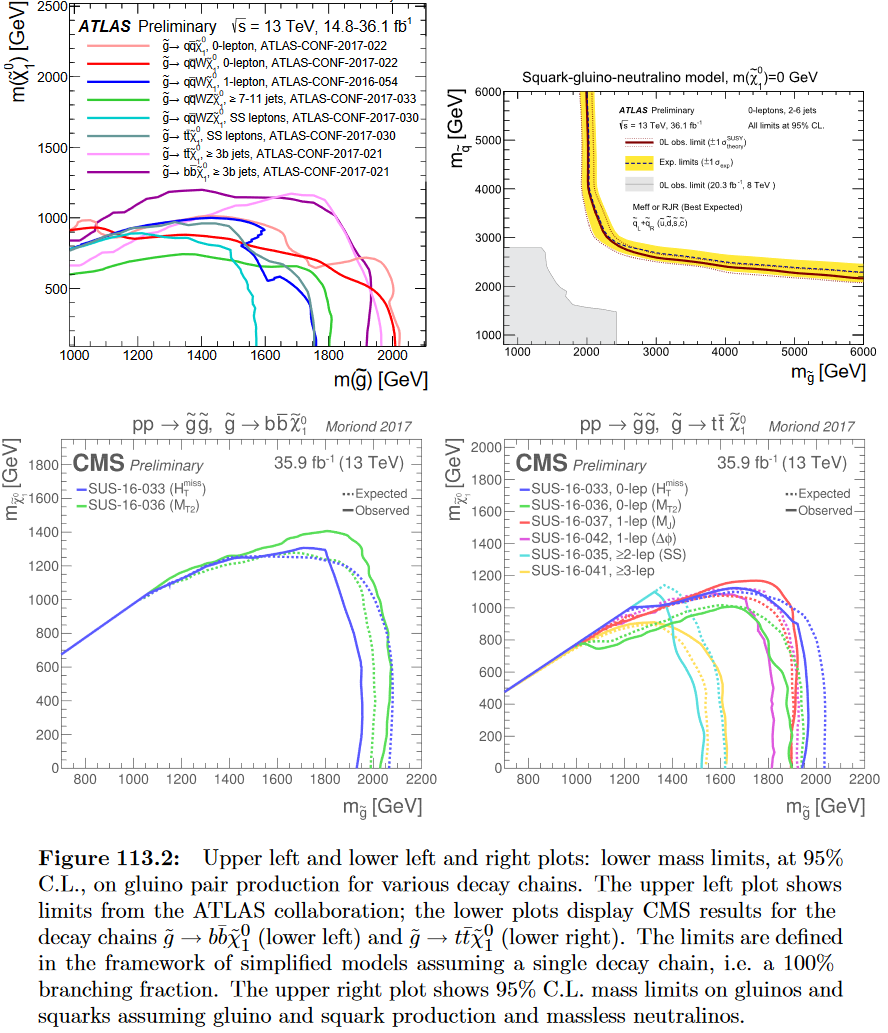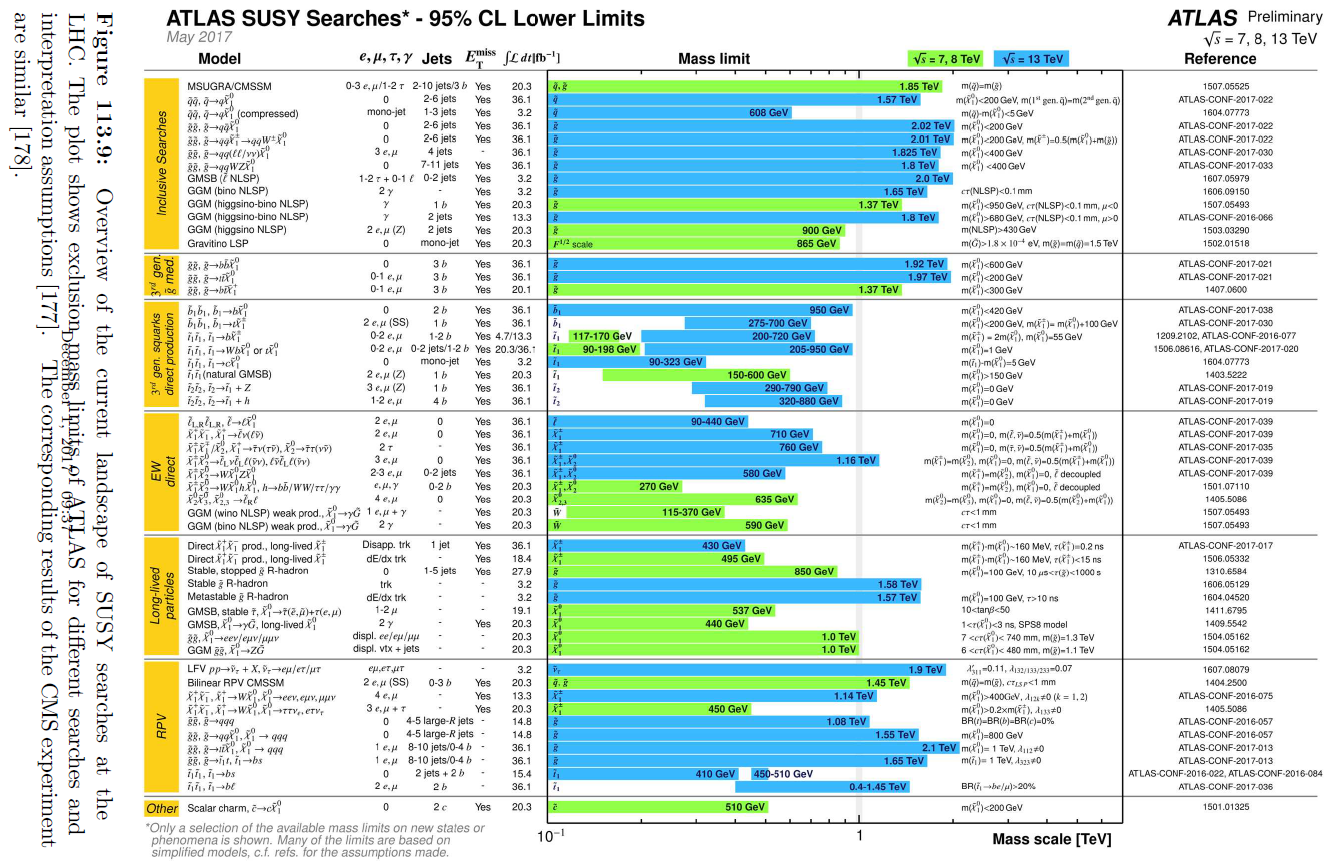nLab gluino
Context
Fields and quanta
fields and particles in particle physics
and in the standard model of particle physics:
matter field fermions (spinors, Dirac fields)
| flavors of fundamental fermions in the standard model of particle physics: | |||
|---|---|---|---|
| generation of fermions | 1st generation | 2nd generation | 3d generation |
| quarks () | |||
| up-type | up quark () | charm quark () | top quark () |
| down-type | down quark () | strange quark () | bottom quark () |
| leptons | |||
| charged | electron | muon | tauon |
| neutral | electron neutrino | muon neutrino | tau neutrino |
| bound states: | |||
| mesons | light mesons: pion () ρ-meson () ω-meson () f1-meson a1-meson | strange-mesons: ϕ-meson (), kaon, K*-meson (, ) eta-meson () charmed heavy mesons: D-meson (, , ) J/ψ-meson () | bottom heavy mesons: B-meson () ϒ-meson () |
| baryons | nucleons: proton neutron |
(also: antiparticles)
hadrons (bound states of the above quarks)
minimally extended supersymmetric standard model
bosinos:
dark matter candidates
Exotica
Super-Geometry
superalgebra and (synthetic ) supergeometry
Background
Introductions
Superalgebra
Supergeometry
Supersymmetry
Supersymmetric field theory
Applications
Contents
Idea
The hypothetical superpartner-particle of the gluon. A gaugino.
Experiment
Experimental exclusion bounds of gluino rest masses due to the LHC experiment excludes gluinos/squarks of mass below about 3-4 TeV (Particle Data Group Review 17, figure 113.2 and 113.9):

LHCSuperpartnerMassExclusion2017.png

Related entries
References
Experimental exclusion as of 2017
- Particle Data Group Review 2017, 113. Supersymmetry , part II (experiment) (pdf)
Discussion of remaining possibilities from the point of view of the G₂-MSSM:
- Malte Buschmann, Eric Gonzalez, Gordon Kane, Revisiting Gluinos at LHC (arXiv:1803.04394)
See also
- Wikipedia, Gluino
Last revised on July 18, 2024 at 11:47:34. See the history of this page for a list of all contributions to it.